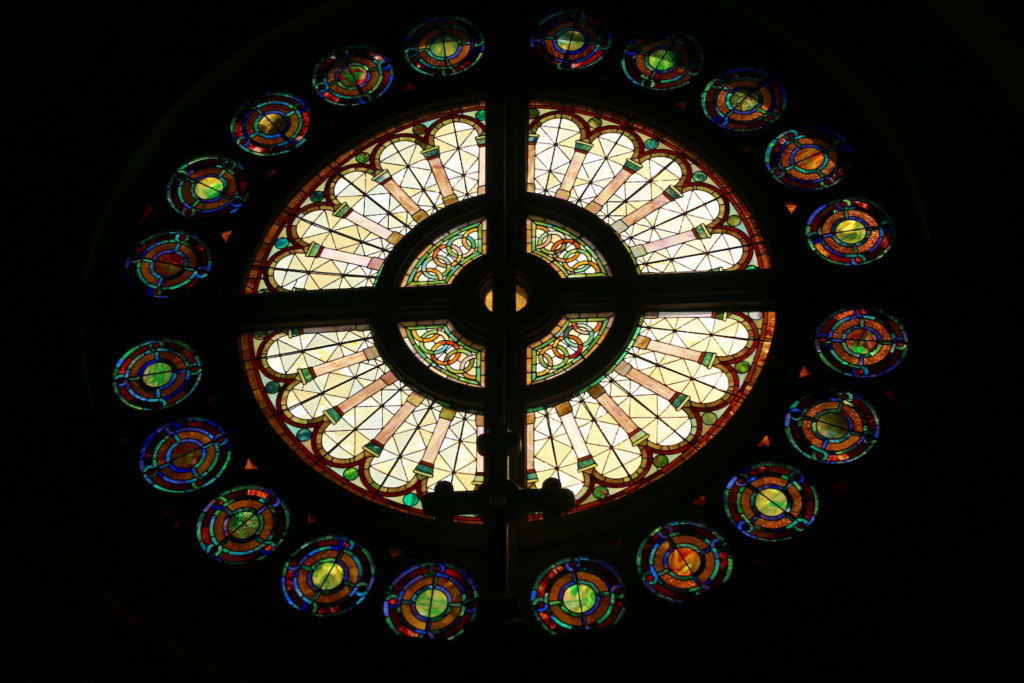W hen I was a kid, I was fascinated by magnets. I loved to watch the little magnetic skaters glide across a mirror in our family’s Christmas village at the flip of a switch, and I enjoyed doing science experiments with magnets and iron shavings in school.
I recall a comparison Pope St. John Paul II made between the Eucharist and the force of a magnet’s pole.
“The presence of Jesus in the tabernacle must be a kind of magnetic pole attracting an ever greater number of souls enamored of him, ready to wait patiently to hear his voice and, as it were, to sense the beating of his heart,” he wrote just six months before he died.
These words of John Paul II came to mind when I heard about the National Eucharistic Revival launched by the U.S. bishops earlier this year. It is a beautiful, powerful image – the idea of Jesus acting as a magnet drawing people to himself in the Blessed Sacrament.
I have begun to ask myself, “Do I allow myself to be drawn to Jesus in the tabernacle? Do I cling to him the way iron shavings cling to a strong magnet? Or do I allow myself to be pulled away too easily by distractions and my lack of love?”
The Eucharistic Revival will help us to renew our appreciation for many aspects of Jesus’ ultimate gift to us, beginning with the centrality of the Mass as the representation of Jesus’ saving sacrifice on the cross.
But it seems to me that when all is said and done, our devotion to the Eucharist will be proportionate to our faith in what we call “the real presence” – our unwavering conviction that Jesus is really and truly present on the altar during every eucharistic sacrifice and in every tabernacle around the world.
Our foundress, St. Jeanne Jugan, was not a highly educated woman, but she was a person of profound faith and committed action.
She often told the young sisters to remember the presence of Jesus in the tabernacle, in the poor and in their own souls. And she gave them this very practical advice:
“Jesus is waiting for you in the chapel. Go and find him when your strength and patience are giving out, when you feel lonely and helpless. Say to him, ‘You know well what is happening, my dear Jesus. I have only you. Come to my aid …’ And then go your way. And don’t worry about knowing how you are going to manage. It is enough to have told our good Lord. He has an excellent memory.”
Jeanne Jugan didn’t have an easy life.
As a young person and then the foundress of a religious congregation, she worked hard and shared everything she had with the poor.
Although she was chosen to be superior by the young women who joined her, and she even achieved a measure of public notoriety, she was treated unjustly by a priest who had been appointed to assist the nascent religious community and stripped of all authority in it, until, 27 years later, she died in total anonymity.
But Jeanne Jugan possessed something no one could take from her – a very real, strong and intimate relationship with Jesus, whom she knew was always waiting for her “in the chapel.” Jesus Christ was real to her – more real than anyone or anything else.
No doubt St. Jeanne Jugan often told Jesus everything that was happening in her life, in both good times and bad. Pope Francis recently spoke to seniors about how they should pray. I think his words would resonate with our foundress.
The pope said, “If you have some wound in your heart, some pain, and you want to object, object even to God. God will listen to you. God is a Father. God is not afraid of our prayer of protest, no! God understands. … Prayer should be like this: spontaneous, like that of a child with his father, who says everything that comes out of his mouth because he knows his father understands him.”
I believe that St. Jeanne Jugan was like a child with her father. She shared with him from the depths of her heart because she knew that God heard and understood her.
May her example, and the words of Pope Francis, convince you that it’s okay to be honest with Jesus, truly present and waiting for us in every chapel or parish church!
Sister Constance Veit is the communications director for the Little Sisters of the Poor in the United States and an occupational therapist.

